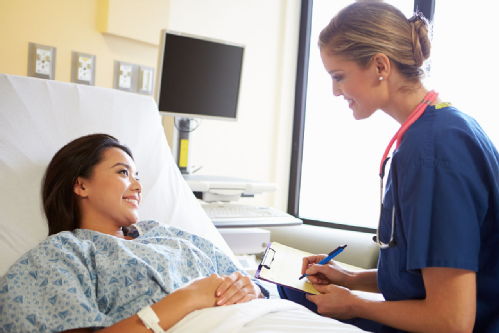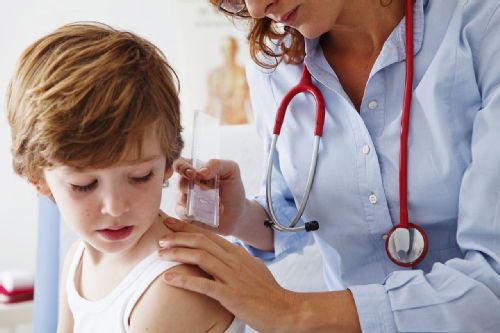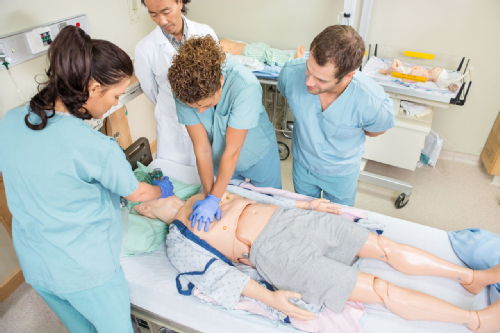All 9 entries tagged Patients
View all 59 entries tagged Patients on Warwick Blogs | View entries tagged Patients at Technorati | There are no images tagged Patients on this blog
May 27, 2016
I am training to be a doctor, right?
For many people becoming a Doctor is the fulfillment of a lifelong dream. For myself I remember as a 7 year old in school being asked to draw what I want to be when I grow up and I drew a Doctor complete with white coat and stethoscope. Staring Warwick Medical School was one of the best days of my life, however the relentless lectures and seemingly endless amounts of information soon brought me down to earth with a bump. The one thing that kept me going was the promise of all the clinical, practical medicine in 2nd year. Now that I’m over halfway through core clinical education I’m starting to ask myself where did all the practical medicine go?
In our GP placements, in particular, I’m struck by the number of medical problems that turn out to be social issues. When taking a history from a stressed out single mother who is having panic attacks due to the pressures of looking after her children alone, one of whom is autistic, I’m left thinking: how can the GP help her? Sure we could think about medication or a referral for counselling but what she really needs is some help at home and some time to herself and unfortunately that doesn’t come in a pill. We also see a lot of cases of anaemia, most of which are caused by a lack of dietary intake of iron. In the area we are in many people have poor diets, some through a lack of education, some through a lack of equipment: one lady didn’t have a working oven as her landlord had still not fixed hers after 3 months! Some people just don’t have enough money to feed themselves properly. Are iron supplements really going to solve that problem?
You may be thinking that social issues are a big part of medicine in primary care but social issues have been causing problems in hospital for a long time. I am currently assigned to a Geriatric (Elderly care) ward at UHCW. Speaking to older patients is extremely satisfying, you get to hear wonderful stories and they often enjoy testing your knowledge by throwing in a few left field answers, especially if they have spoken to medical students before! While the Geriatric ward can be very fulfilling it can also be heartbreaking. Some of the patients are only in hospital because they haven’t been looking after themselves and sadly no one else has either. Patients come in dehydrated and malnourished and with poor levels of self-care. The paramedics who brought them into hospital might have been the first people they have spoken to in weeks. Social issues bring people into hospital but they can also prevent them from leaving. If people aren’t coping at home they need to remain in hospital while packages of care are organized, every extra day that goes by is another chance to acquire a hospital acquired infection. As a medical student I am starting to understand just how complex the healthcare system is and just how many people are involved. All the cogs have to turn together to make the machine work and sadly it is often social care issues that this all come unstuck! As medical students we need to know to navigate this minefield so we can help our patients in the future and stop social inequalities impacting on the health of our patients. I’m training to be a doctor, not a social worker, but I don’t think you can be a good doctor without all the other cogs!
Joanne
January 06, 2016
The End of Pre–clinicals and the Start of Clinicals
For the past year and a half, we have spent a great deal of time in the lecture theatre and in other practical sessions getting to know the human body inside and out (literally). We have studied the structures of cells, tissues and organs, how they work together, what can go wrong and how to manage it. Most of the work we’ve done up till now has been very theoretical – although WMS does a good job of integrating (or at least introducing) clinical exposure into the curriculum, we have still had to endure more Power Point than any human should have to. This is understandable, of course, as the amount of information we must absorb is just huge and the pace is quick and we need to be able to access a lot of it in the future.
The end of the autumn term also marked the conclusion of the pre-clinical phase of our curriculum. Our weeks of lectures and intense group work have morphed into something much more hands-on and practical in its delivery –and most of us our going into this period with many different emotions swirling about. It’s exciting that we’re finally going to be on wards and working with teams like proper doctors do (which of course we are not, yet). It’s a little scary that our hands are no longer going to be held quite so tightly as before – a lot of our learning is self-directed and self-managed. But it’s also very encouraging to know that we are given responsibility by the medical school (and its overseers) to manage our own education to a high degree.
From what I have heard, Warwick are quite pro-active and advanced regarding clinical exposure as compared to other medical schools around. Although (of course) all students in the country complete the same amount of clinical exposure by graduation, and all must meet the same standard, WMS introduces the exposure far earlier in our medical-school careers than many other medical schools, thus making the process of speaking to patients far less daunting than it might otherwise be. We meet several patients during the first year through a variety of means: ‘community days’, in which we meet non-hospital patients in the community with medically complex conditions; brief hospital-ward introductions and examination practice; and various other opportunities.
But now, as of Monday 4 January, we will be joining the hospitals full-time and our focus will shift to learning in the clinical environment. It’s very exciting. We’re focusing on history-taking and examination of common diseases in our first ten-week block. Although my partner and I are based on a respiratory block, the focus is not on respiratory ailments as such, but rather the basics of patient interaction from the doctor’s perspective. All of our cohort are distributed throughout the three main hospitals in the Warwickshire area, across numerous wards, but all will be following the same basic curriculum. I am very much looking forward to the transition towards becoming a member of the hospital team and putting my efforts into learning in the clinical environment.
John
February 09, 2015
Access all areas

Everyone seems to have got over their January blues, people have given up on their new years’ resolutions and everyone has settled into our new routine for this block.
We have started our bedside teaching in hospitals which means we have NHS badges with our names and a very dodgy photo declaring that we are medical students. We spend half a day a week with our clinical tutors visiting different wards of the hospital and getting the chance to practice histories and examinations.
I’m based at Warwick hospital, which is quite small but has great facilities for the medical students. There is a library for students and a study room as well as a room to practice clinical skills, there are also lots of Clinical education fellows who are passionate about teaching and who are often not long qualified themselves so are very sympathetic when we forget things (which happens a lot!).
I was very nervous about going to take a history and examine a real patient, but she was so lovely and patient and said she was happy to help us. We learn so much from patients and the feedback they give us, I’m hoping I can use our hospital placements to really refine my clinical skills and with practice I will hopefully be less nervous!
In addition to my first time on the wards, I also had my formative OSCE this week. This was a small practice version of the exam we will have in the summer which tests our clinical skills in an exam setting. Unlike in the summer exam we were told which skills we would be tested on so we could focus our practice. I have been practicing a lot with my CBL group which has proved invaluable!
The medical school has blood pressure cuffs and resuscitation dummies for us to practice with so we have had a few practice sessions where we all give each other feedback and go through things we aren’t sure on. It’s been very helpful as everyone has slightly different ways of doing things so you can pick up some good tips just from observing!
Another new thing for this block has been the start of our student selected component. This is part of the course we get to pick from several options (including Trauma medicine, Tropical and Infectious diseases and Global Health) a module that we can attend additional sessions on. I chose the Sleep Medicine module as I was quite interested in how sleep is affected in a lot of psychiatric and neurological disorders. I’m really enjoying the sessions so far, we are learning about how sleep can be measured and how disrupted sleep can lead to multiple health problems as well as some strange things such as sleep walking and nocturnal head banging.
These sessions are much less pressured than lectures as we aren’t being examined on them so we can just relax and enjoy learning new things. My group will also be visiting a local sleep laboratory so I will have to remember to bring my pyjamas to that session!
February 06, 2015
Applications!
Before we broke up for Christmas we had 2 group work sessions on careers and applying for speciality positions. We were given the opportunity to think about what things were important to us in the first session – whether it was things like location, money, work-life balance, being in a management position, research, and many more. We all had a completely different list of things, and it was interesting to hear what everyone thought.
The second session looked more at applying for jobs. We were given a list of the applications per job for last year, and could see which specialities were the most competitive. We also looked at how many people applied for multiple specialities, and how many applied for GP alongside a hospital-based career.
The main idea of these sessions however was for us to start thinking about what we can be doing now that will tick off boxes in our applications later on. It was encouraging to see that a lot of the skills that we need evidence of we have already been doing, or could easily start doing. For example, evidence of working in a team can be shown from our CBL sessions.
In September we will have our second Student Selected Component (SSC) opportunity, and this time we are to each take on a research project. This will tick off another box or two! We can choose whether we want to do lab-based research, perhaps questionnaires in patient experience, or an audit for example. We also have the option to either select a project from a list that the university has created and found for us, or arrange and come up with a project ourselves. This allows us to find something that we are really interested in, and even tailored towards possible career paths.

As I am interested in potentially doing Paediatrics, I would love to do a project in that area. Even though a lot of the things we need to check off on the application forms are generic, it would look great if I did end up applying as it would show an ongoing interest. This was one of things that they suggested to us in the sessions – if you have an idea of what area you’d like to go into then we should make the most of any opportunity to show an interest. This could be attending a talk or conference, writing an essay or doing a poster, or perhaps even choosing your elective in that area.
Another great way to show interest is also to be a part of that speciality’s society. A lot of the societies are looking for a new committee at the moment as the final year students are preparing to hand over and leave. Being able to write that you held a committee position would not just look good for showing a keen interest but also help demonstrate different levels of responsibility.
Even though we still have a way to go, it is helpful to have an idea of what to expect in the future and perhaps begin to prepare. It is crazy how fast this term is going already!
January 16, 2015
Happy New Year!
Happy New Year
Christmas is over, and it’s time to return to hospital. I had a really nice 2 week break and got to spend some time with my family and friends, and I didn’t open a textbook or read a medical article once! I love not having exams in January.

This is my last block of “general clinical education” before finals and I am currently placed in Acute Medicine. Acute block covers Accident & Emergency and EMU, AMU or whatever acronym a hospital has chosen to call their admissions unit. We also have various lectures and simulation sessions which use SimMan mannequins to let us practice assisting at and leading various medical emergencies.
The most advanced SimMan has a pulse, breathes, can speak and make noises, and can even be sick. Oh and you can catheterise him, which gives you some idea how anatomically correct he is. In Sim sessions the SimMan is programmed to have a specific condition and reacts to the interventions that you give him, which makes it pretty realistic!
We also see real patients on Acute Block, both in ED (Emergency Department) and after admission on post take ward rounds. ED is a great place to be as a medical student as you get to see patients when they are, “fresh,” and before anybody else has influenced your thinking with their diagnosis or management plan. On the ward it’s easy to slip in some obscure differential diagnosis when you’ve heard it muttered by the registrar, you’re thinking on your own in ED!
This is the place where you can clerk patients, order tests (under supervision) and suggest what you would do next, and the place where, when things are going well, you most feel like you can and will be a doctor one day. Because it’s often so busy, juniors are more than happy for you to help out and patients are generally happy to see you as you can sometimes speed things up a little bit for them.
Acute Medicine is also a great block to finish medical school on, as you literally have no idea what will walk through the door and you have to be able to pull any focussed history or examination out of the bag, and do it well. This is different to other blocks where you know that you’re doing a cardiology ward round, so it might be a good idea to read up on cardiology…
Having spent the last 3 and a half years saying, “I will start revising properly for finals after Christmas of 4th year,” the time has finally come. I’m sure the next few months are going to be pretty stressful, but I’m finding it satisfying to see how all the knowledge and skills I’ve learnt are slowly starting to knit together and make some sense. There is light at the end of the medical school tunnel, and I can see it now.
 Catrin Davies
Catrin Davies

 Please wait - comments are loading
Please wait - comments are loading
 Loading…
Loading…